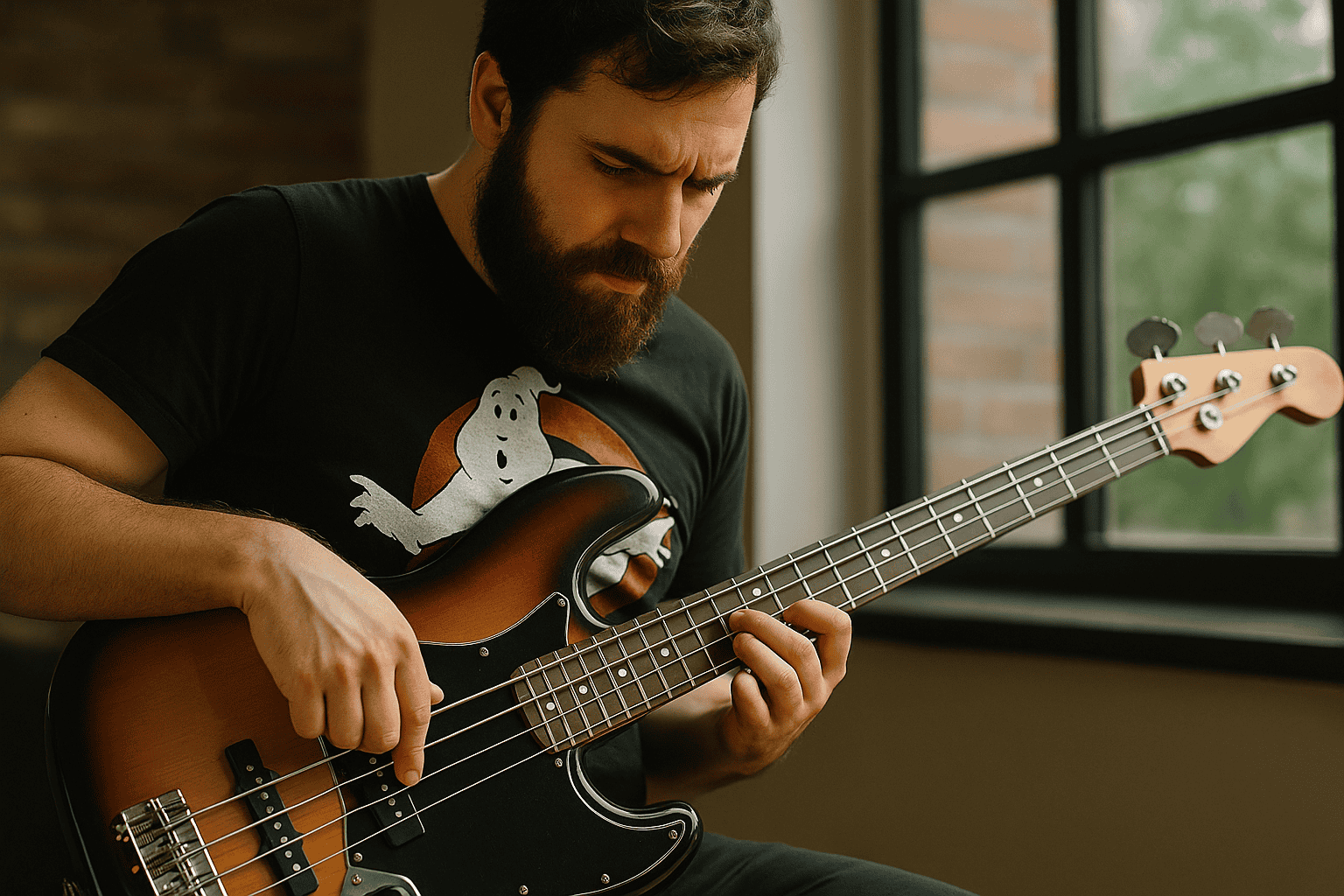
Slap bass is one of the most impressive and funky techniques you can learn on the bass guitar. Popularized by legends like Larry Graham, Marcus Miller, and Flea, slap playing brings an energetic, percussive tone that instantly grabs attention. But when you’re just starting out, slap can seem tricky or even intimidating. Don’t worry! With the right moves and a bit of practice, you can quickly build a solid foundation and start grooving like a pro. In this article, we’ll go through the essential slap techniques for beginner bassists, explained simply and without the headaches.
Understanding what slap bass is
Slap bass is a style where you strike the strings with your thumb or pull them with your fingers to get a sharp, percussive sound. Unlike standard fingerstyle or pick playing, slap gives a more dynamic, funky tone, perfect for funk, rock, or even pop music. The technique mainly relies on two movements:
- Thump: a quick thumb strike on the string.
- Pop: pulling the string with your index or middle finger and letting it snap back against the frets.
Mastering these two basics is the foundation of slap bass.
Getting the right hand position
Before you even start playing notes, you need a comfortable and efficient hand position. Place your thumb slightly angled above the string, usually near where the neck meets the body of the bass. Keep your wrist relaxed and avoid unnecessary tension. Your left hand should press the notes firmly but cleanly, as sloppy fingering will make slap sound messy.
The thump technique
Thump is the core motion of slap. You use the bony side of your thumb (not the tip) to strike the string, producing a percussive tone.
To practice:
- Hover your thumb over the E string.
- Strike the string with a quick downward motion.
- Let your thumb rebound naturally without resting on the string.
Aim for a clean, punchy sound – not too soft, not too harsh. Repeat slowly, then increase speed as you gain control.
The pop technique
Pop complements the thump and gives your slap playing that classic funk brightness. Use your index or middle finger to hook under the D or G string, pull it slightly away from the fretboard, then let it snap back against the frets. Alternating between thump and pop creates a rhythmic slap groove that’s both percussive and melodic.
Practicing timing with a metronome
Slap isn’t just about flashy technique – it’s all about rhythm. Grab a metronome or drum loop and start with a simple line: thump on beat one, pop on beat three. Stay perfectly in time. Slap sounds messy when your hits are late or early, so train your timing from the start to lock in with the groove.
Learning ghost notes
Ghost notes are muted, percussive hits that add groove to your bass line. To play them, lightly rest your left-hand fingers on the string without pressing down fully, then strike with your thumb or finger. You’ll get a dry, percussive sound that spices up your slap rhythm.
Mastering hammer-ons and pull-offs in slap
To make your slap lines more fluid, combine slap basics with other techniques:
- Hammer-on: after a thump, quickly press another note on a higher fret with your left hand to produce a second note without striking the string again.
- Pull-off: do the opposite by pulling a fretted note to a lower one.
These add speed and variation to your slap playing, letting you build licks without constant thumping and popping.
Using the left hand to clean up your sound
A good slap tone isn’t just in the right hand – the left hand does a lot of work too. If you don’t fret notes cleanly or leave unwanted resonance, your slap will sound muddy. Practice slow patterns, focusing on clean, buzz-free notes. The left hand can also mute strings quickly to make your slap more percussive and controlled.
Practicing simple riffs
Once you have thump and pop down, start with basic riffs. For example, alternate a thump on the E string and a pop on the G string. Loop this pattern until it feels natural. Gradually increase the tempo, add ghost notes, hammer-ons, or pull-offs. This builds your muscle memory and gets you grooving confidently.
Listening and learning from the masters
Technique is important, but slap bass is also about feel. Listen to great bass players like Larry Graham, Marcus Miller, Flea, or Victor Wooten. Watch how they use their hands, how they place their notes, and how they lock in with the rhythm. Start by copying simple slap lines before moving on to the flashier ones.
Conclusion
Slap bass is a game-changer that can bring insane energy to your bass lines. The foundation is a solid thump, a clean pop, a controlled left hand, and great timing. With consistent practice, patience, and a metronome, you’ll soon add funky slap grooves to your playing and make the crowd nod their heads.
With 10 to 15 minutes of focused practice daily, you can play your first slap riffs within a few weeks.
No, any bass works, but a comfortable neck and lower action strings make it easier to learn slap.
Yes for beginners, but as you progress you can add your middle finger and other advanced techniques.
You can, but it’s not recommended. Timing is crucial for slap, and a metronome keeps you precise.
No, while slap is iconic in funk, it’s also used in rock, pop, and even some metal genres.